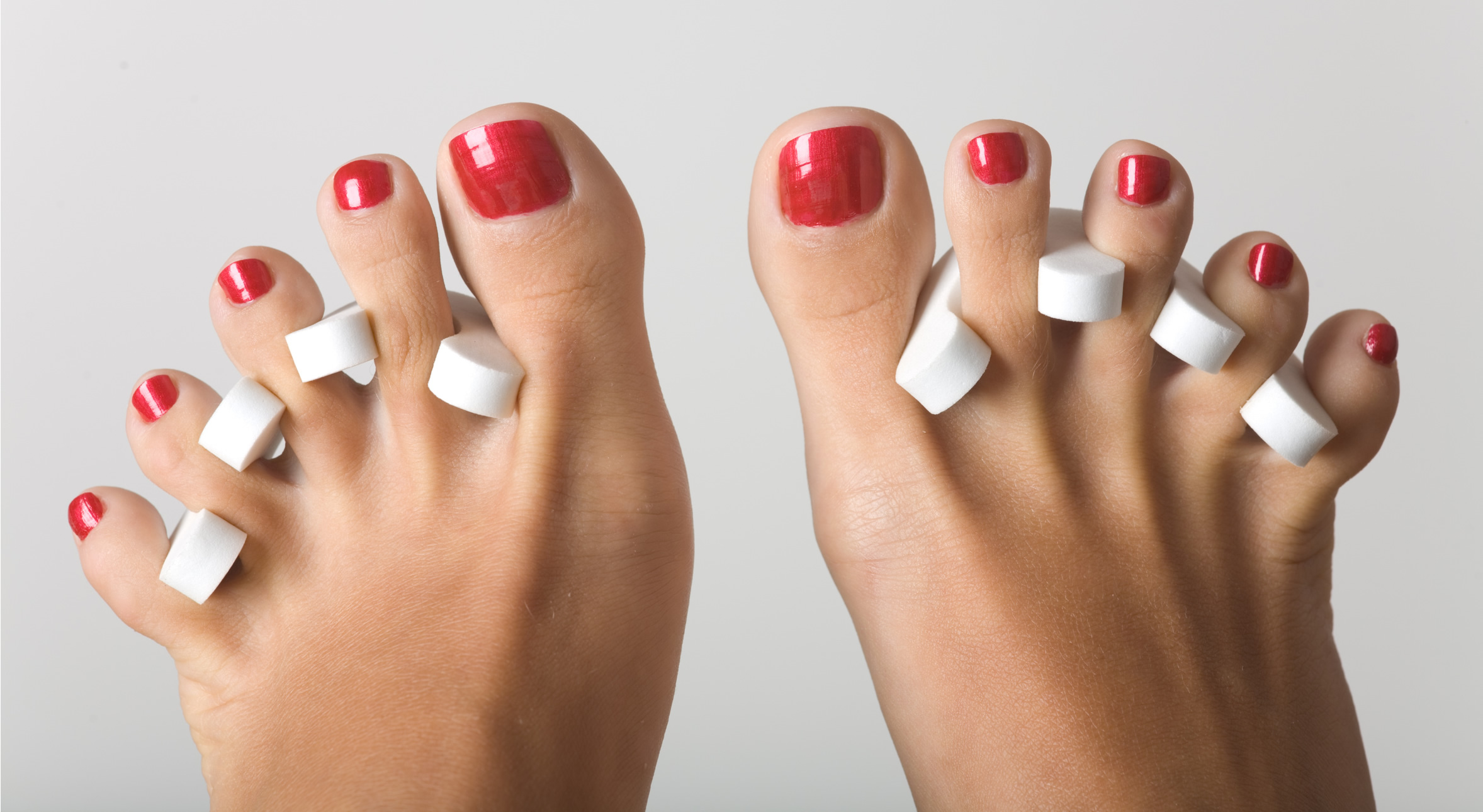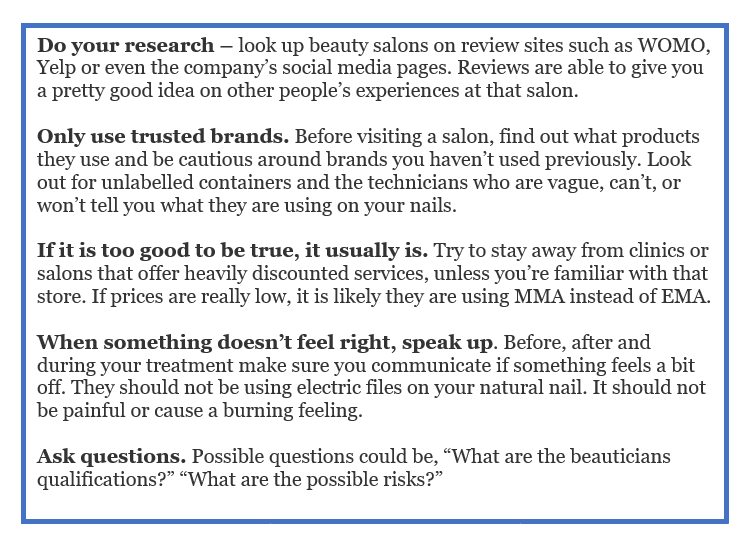
18 Oct Woman Loses Leg After a Pedicure at a Nail Bar
Woman Loses Leg After a Pedicure at a Nail Bar
Let us give you some advice on how to choose a safe nail bar, and explain the difference between a Podiatrist and a nail technician.
Shine Lawyers have represented Queensland woman who lost her leg after visiting a nail bar to get a pedicure.
Unfortunately, infections are all too common after a visit to a local nail bar and we have been waiting to hear a horror story like this one.
There are some great nail technicians out there and this never should have happened.
We did a little undercover operation in one of the very busy Sunshine Plaza nail bars and were SHOCKED to see electric files being reused again and again, nails being filed so thin it was painful and took months to grow back and polish used on obviously fungal nails.
In response to this local lawsuit and with summer just around the corner (your toes are coming out from hibernation!) we want you to look your best without losing limbs or getting some horrible infection.
Podiatrist v Nail technician:
Put simply, Podiatrist is = a health professional, and Pedicurist/Nail technician is = a beauty professional. We believe there is a role for both of us.
A podiatrist undergoes a 3-4 year Bachelor’s degree at a University where they receive in-depth medical training. By law a Podiatrist is required to continue training and learning every year, to keep up with the ever-changing, ever-growing healthcare industry. A medical board called QCAT and AHRPA are our watchdogs, making sure all Podiatrists are practicing in a clean and safe environment as well as providing the best care to the public. If we break the code, we go before the board and risk losing our careers. We do much, much more than just cut toenails and take away hard skin, including treating foot pain, and knee pain, assessing the way you walk, and managing complicated health issues.
Nail bars and salons are a business that provides a beauty service above and beyond what Podiatrist will provide. They may trim nails, reduce calli, paint the nails, and give foot massages all while you sit in a massage chair. Nail technicians undergo training too and there are some fantastic and reputable training organisations out there. By law each technician is required to produce evidence of their qualifications and the good salons will have them visible for all to see. It is illegal to practice without qualifications or to misrepresent that you are qualified. Nail technicians also answer QCAT if they are not providing a clean and safe service.
No salon should be choosing money over their client’s safety & welfare but unfortunately, it happens, and in the industry, they are known as Non-Standard Salons (NSS). This can mean using cheap/more toxic materials on your nails or not properly cleaning/sterilising instruments between clients. All it takes is a little break in the skin and someone else’s germs to cause an infection. The use of cheaper materials such as MMA can cause irritation, swelling, redness, and yellow discolouration of your nails and lead to fungal or bacterial infections.
Shine Lawyers offer some sound advice on how to avoid a bad experience at a beauty salon:
If you have a problem or have had a problem in the past, the first and most obvious thing to do is contact the Salon to talk to them about your concern. If you are not satisfied with the outcome, you can report the incident to the Office of the Health Ombudsman.


Sorry, the comment form is closed at this time.